Kamakura Guide: The Great Buddha, Zen Temples, Dining, Hotels, Access

Kamakura, located south of Tokyo, is home to many temples and shrines with rich history, as well as beautiful beaches that attract many visitors. This guide features the best places to visit in Kamakura along with restaurants, hotels, and other travel tips.
Kamakura: The Old Capital in Eastern Japan
Kamakura, located south of Tokyo, prospered as the capital of Japan between 1185 and 1333. Up until that point, Kyoto had been the nation’s capital, but General Minamoto no Yoritomo (1147-1199) carried out his nation-building endeavors with Kamakura as the hub of the country.
Kamakura is dotted with Zen temples, which were favored by the warrior class in the Kamakura period, and shrines, offering plenty of occasions to take part in Zen meditation and tea ceremonies. A resort city by the ocean, Kamakura boasts excellent restaurants and cafes, too.
Kamakura: 20 Things to Do and Travel Tips
1. The Great Buddha at Kotokuin Temple
2. Hasedera Temple
3. Komachi Street
4. Hokokuji Temple (Bamboo Temple)
5. Tsuruoka Hachimangu Shrine
6. Zeniarai Benzaiten Shrine
7. Engakuji Temple
8. Kosokuji Temple
9. Zuisenji Temple
10. Kaizoji Temple
11. Chojuji Temple
12. Meigetsuin (Hydrangea Temple)
13. Gokurakuji Temple
14. Goryo-jinja Shrine
15. Genjiyama Park
16. Kamakura Museum of Literature
17. Former Residence of Prince Hironobu Kacho
18. Kamakurakokomae Station
19. Yuigahama Beach and Inamuragasaki Beach
20. The Kamakurabori Museum
Restaurants and Cafes in Kamakura
Kamakura Shopping Spots
Hotels in Kamakura
Access: How to Get to Kamakura
Getting Around in Kamakura
A Model Itinerary for Kamakura
Kamakura Area Guide
The Weather in Kamakura and What to Wear
Kamakura Events and Nature
Kamakura Souvenirs
1. The Great Buddha at Kotokuin Temple

At a height of roughly 11.4 meters while seated, and weighing 121 tons, this giant Buddha is the symbol of Kamakura. You can check out the inside of the statue for a small fee of 20 yen, too.
Hotels near Kamakura Great Buddha Hall and Kotoku-in Temple
↑ Return to the top of article.
2. Hasedera Temple
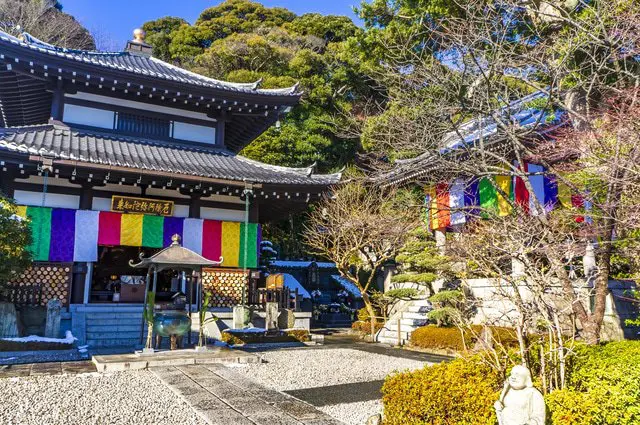
Hasedera Temple is a five-minute walk from Hase Station on the Enoden line. Called the “Temple of Flowers,” it’s popular as a place where visitors can watch the scenery change with the seasons. Be sure to stop by in June to see the gorgeous hydrangeas bloom.
Hotels near Hasedera Temple
↑ Return to the top of article.
3. Komachi Street

Photo by Pixta
Komachi Street is right outside the east exit of JR Kamakura Station, and spans 360 meters in length, with Tsuruoka Hachimangu Shrine at the end. The street is always bustling with shoppers, even at mid-day during the week.
At the rows of stores on Komachi Street, you can stroll around and snack on Japanese treats, visit souvenir stores and pick up fashion accessories and other goods. The street also has all sorts of genres of food. To get there, take a left out of Kamakura Station’s east exit and walk for one minute.
Read also
↑ Return to the top of article.
4. Hokokuji Temple (Bamboo Temple)
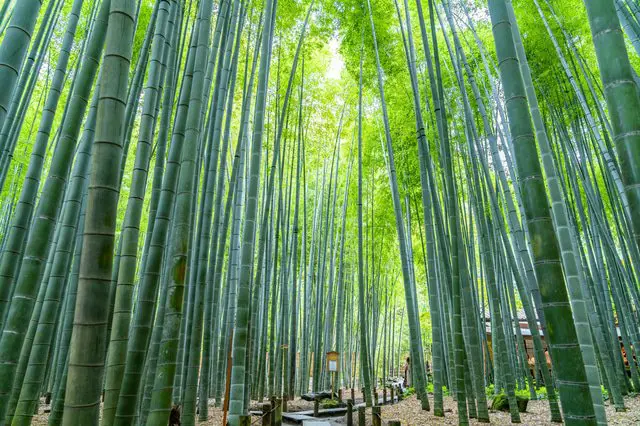
Hokokuji is known as “the bamboo temple” for the beautiful bamboo forest that spreads out behind the temple itself. Come here to enjoy the greenery and calming atmosphere.
Hotels near Hokokuji Temple
↑ Return to the top of article.
5. Tsuruoka Hachimangu Shrine

A short walk from Kamakura Station, Tsuruoka Hachimangu Shrine still retains an aura that exemplifies how Kamakura felt when it was the prosperous heart of the nation, which you can feel for yourself when you visit.
Hotels near Tsurugaoka Hachimangu Shrine
↑ Return to the top of article.
6. Zeniarai Benzaiten Shrine

It has long been thought that the Zeniarai Benzaiten Shrine, nestled deep in the Kamakura mountains, can bestow blessings of financial prosperity. Put your money in a strainer at the shrine and rinse it with spring water from the shrine compound, and it will multiply many times over, or so the story goes.
Read also
↑ Return to the top of article.
7. Engakuji Temple
Engakuji Temple is a short walk from Kita-Kamakura Station and is known for its giant “Sanmon” temple gate, as well as the dragon painted on the temple ceiling. Every morning at 6:00, the temple conducts a free dawn meditation meeting, which doesn’t require a reservation.
8. Kosokuji Temple
Kosokuji Temple belongs to the Nichiren sect of Buddhism. It is well-known for its flowers; every time the seasons change, the flowers paint the temple grounds new colors. It’s also famous for its hydrangeas, with more than 200 varieties planted in the compound.
Address: Kanagawa, Kamakura, Hase 3-9-7
9. Zuisenji Temple
Belonging to the Rinzai sect of Buddhism, Zuisenji Temple is Kamakura’s first temple of flowers, and is also known for its fall foliage. No matter when you visit, you will behold a cornucopia of blooms, with daffodils, plum blossoms, cherry blossoms, wisterias, hydrangeas, and more.
Address: Kanagawa, Kamakura, Nikaido 710
↑ Return to the top of article.
10. Kaizoji Temple
This Rinzai Buddhist temple, 15 minutes from Kamakura Station, is famous for its clovers; many people visit the temple in September, said to be the best time to view them.
Address: Kanagawa, Kamakura, Ogigayatsu 4-18-8
11. Chojuji Temple
This gorgeous temple has a garden that is only open for visitors to see during spring and fall weekends when the weather is clear. Chojuji is also the gravesite of Takauji Ashikaga, a prominent figure in the waning days of the Kamakura era.
Address: Kanagawa, Kamakura, Yamanouchi 1503
↑ Return to the top of article.
12. Meigetsuin (The Hydrangea Temple)

Photo by Pixta
Meigetsuin Temple in Kita-Kamakura is also called “the hydrangea temple” for its flowers. You can view the garden through the “windows of enlightenment,” shaped like circles, which symbolize enlightenment, truth, and the cosmos. The garden behind the temple is only open for viewing during the fall foliage season.
Hotels near Meigetsuin Temple
Read also
↑ Return to the top of article.
13. Gokurakuji Temple
Close to the Enoden Gokurakuji Station, Gokurakuji Temple has famous hydrangeas and is located in a quiet residential neighborhood. The main temple building has a stately air.
Address: Kanagawa, Kamakura, Gokurakuji 3-6-7
14. Goryo-jinja Shrine (Kamakura Gongoro-jinja Shrine)
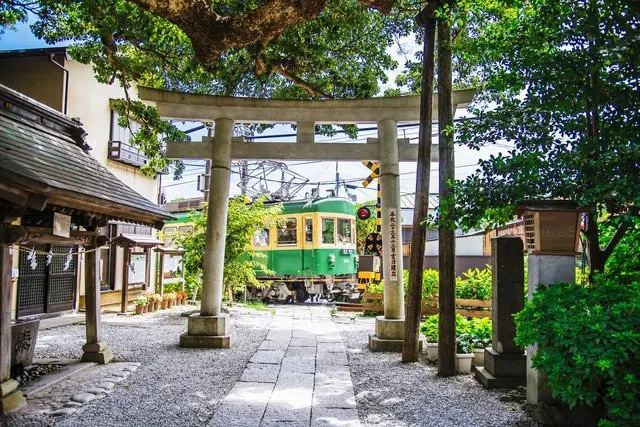
10 minutes away from Hasedera Temple, this shrine is a popular photo spot despite its comparatively small size. You can capture great scenes of blooming hydrangeas around a torii gate up ahead, while an Enoden train rattles by in the distance.
Address: Kanagawa, Kamakura, Sakanoshita 4-9
↑ Return to the top of article.
15. Genjiyama Park
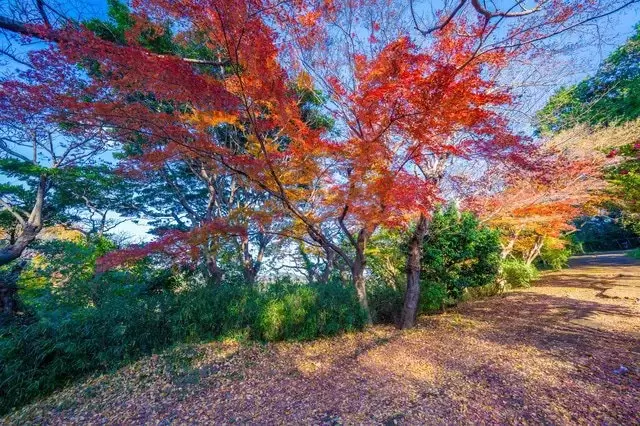
In the spring, many visitors come to see the park’s flowers, then come again during the rainy season, when the hydrangeas are in bloom. In the fall, you can see vivid foliage colors. The park also has hiking trails and picnic spots, making it ideal for those wanting to spend time outdoors.
Address: Kanagawa, Kamakura, Ogigayatsu 4-7-1
16. Kamakura Museum of Literature
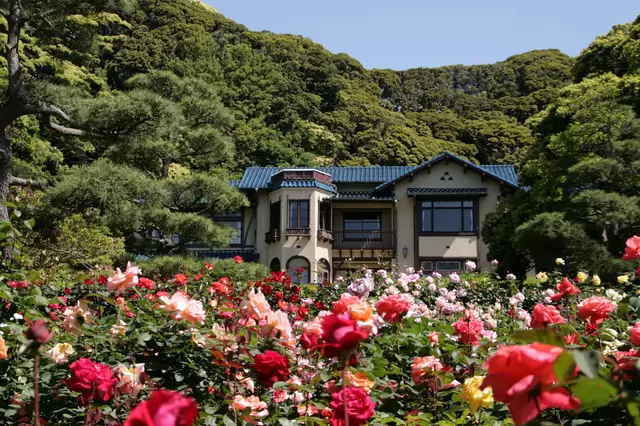
The Kamakura Museum of Literature was once used as a residence by Eisaku Sato, former Prime Minister. It is said that here in this Western-style structure, he became close with the Nobel Prize-winning writer Yasunari Kawabata, and the building is rich with history. The roses in the garden are in full bloom from mid-May to late June, and from mid-October to late November.
Address: Kanagawa, Kamakura, Hase 1−5−3
↑ Return to the top of article.
17. Former Residence of Prince Hironobu Kacho
Erected 80 years ago, this extravagant building was the home of Hironobu Kacho. The residence was made using the half-timbering style, and it was selected as one of Japan’s top 100 historical parks.
Address: Kanagawa, Kamakura, Jomyoji 2-6-37
18. Kamakurakokomae Station
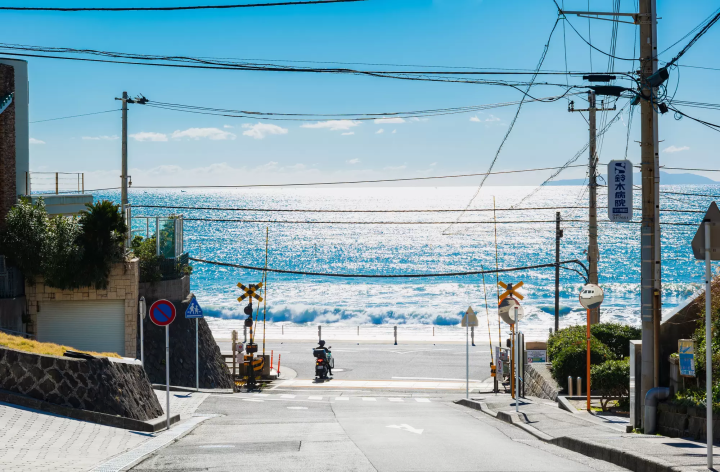
Photo by Pixta
16 minutes away from the Enoden Fujisawa Station, this picturesque spot at the Enoden Kamakurakokomae train stop frequently appears in anime, manga, and movies. Many people gather here on weekends to snap a photo at the railway crossing, with the sweep of Shichirigahama Beach’s sand and surf spreading out in the background. The fare is 260 yen.
↑ Return to the top of article.
19. Yuigahama Beach and Inamuragasaki Beach
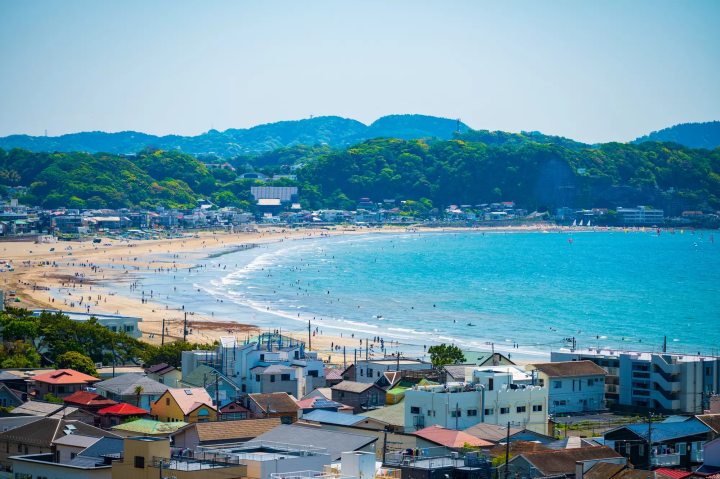
Photo by Pixta
Yuigahama and Inamuragasaki are the beaches that run alongside the Kamakura seaside. When summer rolls around, the beaches will be flooded with people enjoying the water and taking part in fireworks festivals. Both of these places are known for their gorgeous sunsets, as well.
↑ Return to the top of article.
20. The Kamakurabori Museum

Kamakurabori refers to a type of carved wooden lacquerware that has been made in the Kamakura area since the late Heian and Muromachi periods of Japanese history. At the Kamakurabori Assembly Hall, not only can you see ancient examples of these works, but even dine on tableware made from modern pieces in their vegetarian restaurant, Cafe Guri.
↑ Return to the top of article.
Restaurants and Cafes in Kamakura
Kamakura has many stylish cafes and restaurants offering local dishes and desserts, as well as traditional wagashi sweets, creative coffee, lattes, and snacks. We’ll introduce you to a few of our favorites.
1. Kamakura Kamameshi Kamakama

Kamameshi is a rice dish cooked in an iron pot called kama. Usually topped with seafood, it's a delicious and filling combination. Savor this dish at Kamakura Kamameshi Kamakama, which is located about a 3-minute walk from Kamakura Station.
We especially recommend the Three-Color Kamameshi with Salted Shirasu. The topping consists of salted shirasu (whitebait), salmon roe that bursts with flavor upon a light bite, and tender sea urchin exuding a rich ocean freshness, all combined with delicious, fragrant rice.
2. OXYMORON Curry Shop
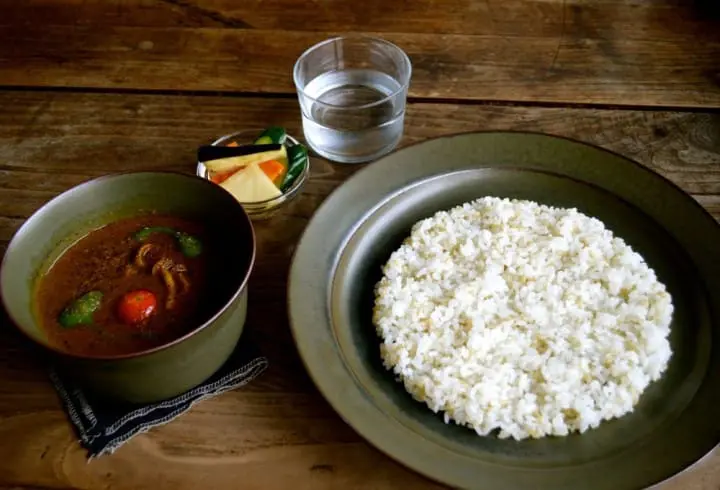
OXYMORON is a restaurant specializing in curry rice dishes with a bright interior and ocean views.
Their menu includes chicken curry, Japanese-style curry, Sri Lankan lamb curry, and more, with the spice level adjustable to your liking.
At OXYMORON Curry Shop you can also purchase beautiful tableware, utensils, and snacks from the in-store sales section, making it a great choice for souvenirs.
3. Kamakura Bowls

Kamakura Bowls offers various types of rice bowl dishes. Their Smoked Salmon and Avocado Rice Bowl is especially popular among female customers. At lunchtime, you can also pair your dish with a beverage and appetizer set.
They are known for their imaginative dishes utilizing the prominent local ingredient, whitebait (shirasu), such as the Whitebait Rice Bowl, Whitebait Pizza, and Whitebait Pasta, all bursting with the rich flavor of whitebait.
4. Toshimaya's Instant-Hit Bread
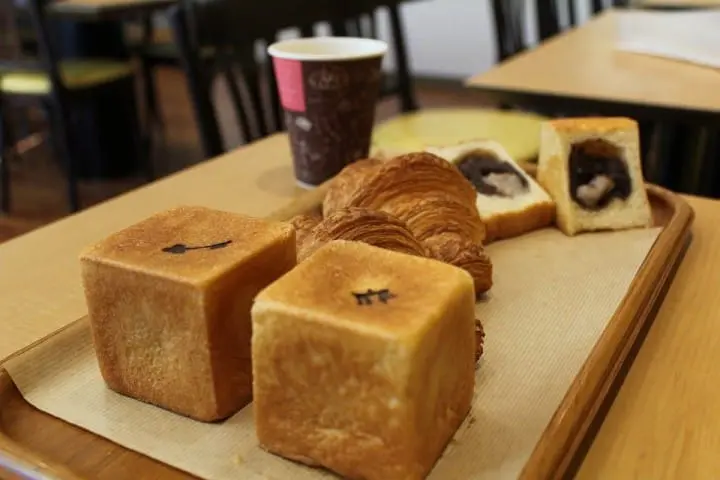
Toshimaya is a Japanese confectionery maker in the Kamakura area with a heritage of over 120 years. They make the famous dove-shaped cookies named Hato Sable.
In recent years, Toshimaya's bread has also garnered a loyal following among those in the know. Drawing on extensive experience in traditional Japanese confectionery, Toshimaya brings genuine artistry to its bread-making.
The Square Red Bean Bread, filled with red bean paste and chewy mochi balls, promptly sells out. Their Japanese-flavored bread options are a must-try!
5. Itsuki Garden
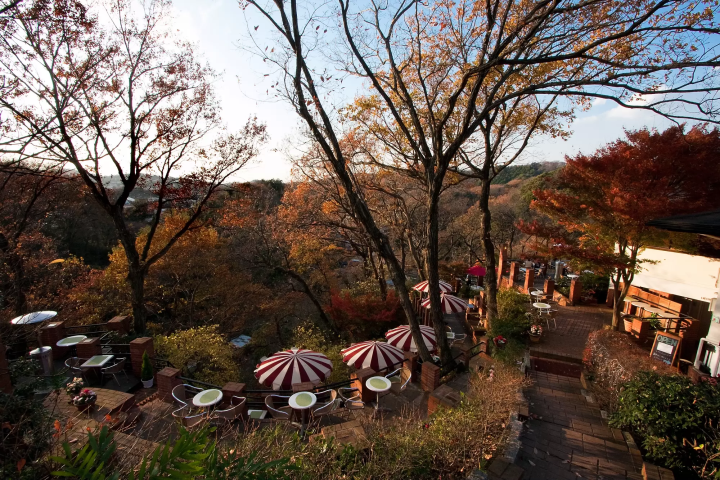
This cafe is located at the foot of the mountain that looms above the Great Buddha. We recommend Itsuki Garden’s homemade cakes and herbal teas.
Address: Kanagawa, Kamakura, Tokiwa 917
6. Traditional Japanese Cafe Mushin'an
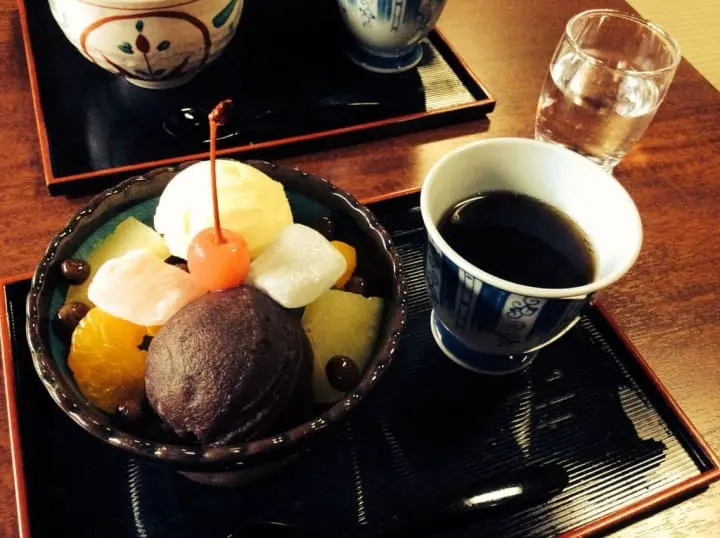
Mushin’an is a traditional Japanese cafe located near Yuigahama Station. If you sit by the window, you can see the Enoden trains glide by right in front of your eyes.
Among the meals offered here, the Japanese dessert Anmitsu, with fruit, mochi (glutinous rice) cakes, and anko red bean paste, is a fan favorite. For a peaceful moment during your Kamakura trip, this is the place to visit!
7. Osaragi Jiro
This cafe, renovated by IDEE, was built out of the residence of writer Jiro Osaragi, who truly loved Kamakura. The cafe feels like you just stepped back in time to the Taisho era (1912-1926).
Address: Kanagawa, Kamakura, Yukinoshita 1-11-22
For other dining options, please check the article listed below:
↑ Return to the top of article.
Kamakura Shopping Spots
Kamakura still retains much of its traditional townscape. Many shrines, temples and other historical sites are crammed into a small street visited by thousands of people every day.
Shopping streets in this area, like Komachi Street, Onari Street, and Walk Omachi have all sorts of fascinating stores. What’s more, many of these places are privately owned and operated, so you’re sure to find something unique to a particular store. We recommend that you do some hunting in these areas.
Komachi Street, Leading to Tsuruoka Hachimangu

Komachi Street is right outside JR Kamakura Station’s east exit, and span 360 meters in length, running all the way to Tsuruoka Hachimangu Shrine.
Both sides are lined with places where you can pick something up to eat while you stroll along. Sample senbei rice crackers, takoyaki and more! There are also peculiar accessory stores, among the many genres, so try visiting as many places as you can.
Onari Street, For Locals
Onari Street, near the west exit of Kamakura Station, sees a greater number of local shoppers compared to Komachi Street, and has more of a working-class vibe. Low-key cafes and cool accessory shops line the street.
Walk Omachi, A Mini-Shopping Mall in Kamakura
Walk Omachi is a little shopping mall about a ten-minute walk from Kamakura Station. There are eight tenants in the two-story terrace house buildings, which were renovated from old Japanese-style homes.
Some of these places include Goto Udon Sara, which serves up Japanese udon, and the unique bookstore Books Moblo. Walk Omachi has recently garnered a lot of attention as an interesting new place in the area, so drop by if you have the chance.
Address: Kanagawa, Kamakura, Omachi 1-1-13
Kamakura Moyai Kogei
Five minutes from the Kamakura Station west exit, Kamakura Moyai Kogei sells Japanese crafts from as far north as Akita to as far south as Okinawa, with an emphasis on pottery.
The products inside the shop have all been carefully handmade by artisans, and are of supreme quality! Using traditional techniques and materials from every region in Japan, each and every piece is precious and valuable, yet reasonably priced. Drop in and make some crafts from Kamakura Moyai Kogei part of your day-to-day life.
Address: Kanagawa, Kamakura, Sasuke 2-1-10
↑ Return to the top of article.
Kamakura Hotels
If you plan to see as much of Kamakura as you can, then you should stay at a hotel in the area. Kamakura has many charming guesthouses where you can enjoy a memorable stay.
1. GEN HOTEL KAMAKURA

Photo courtesy of Booking.com
GEN HOTEL KAMAKURA is very convenient for those eager to explore the best sights around Kamakura on foot. The hotel is within walking distance of central Kamakura. Tsurugaoka Hachimangu Shrine and the famous Komachi-dori Street are located nearby, ensuring guests can easily explore the local attractions.
The facility beautifully combines modern comfort with the traditional styling and ambiance of Japan. Many rooms feature a lovely Japanese floor table, allowing visitors to enjoy a relaxing tea or traditional sweet after a long day.
2. BIRD HOTEL

Photo courtesy of Booking.com
BIRD HOTEL is a 3-star hotel located near Yuigahama Beach and Zaimokuza Beach. The hotel has a garden and spacious rooms, making it a popular choice for family trips.
The restaurant within BIRD HOTEL serves American cuisine. Vegan options are also available.
3. Guest House Irodori Kamakura

Photo courtesy of Booking.com
Guest House Irodori Kamakura is a traditional guest house with a distinctive atmosphere and communal setup.

Photo courtesy of Booking.com
Kamakura has long been renowned for its connection to samurai culture, and the staff at Irodori Kamakura enthusiastically showcase this for their guests.
The accommodation is wheelchair-friendly, and the staff provides guided tours and activities that are universally accessible.
With both Yuigahama and Zaimokuza beaches nearby, you'll have a wealth of options for how to enjoy your cozy Kamakura stay.
4. GOOD MORNING ZAIMOKUZA
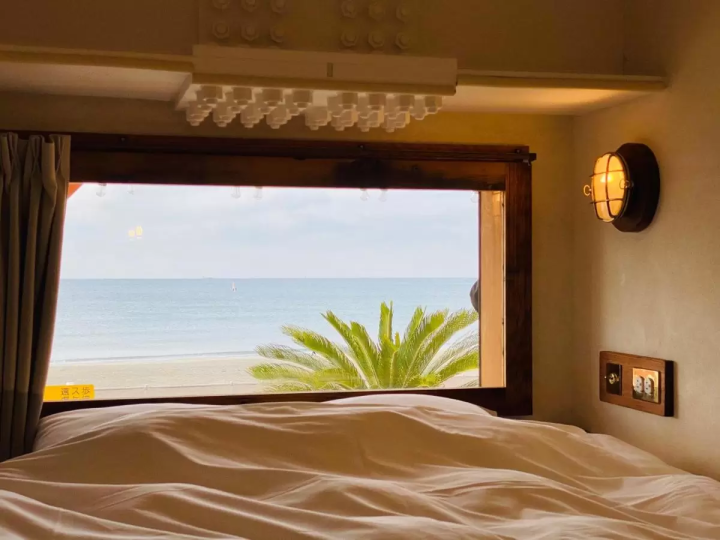
Photo courtesy of Booking.com
If you're seeking a beautiful beach bungalow, a beachside stay at GOOD MORNING ZAIMOKUZA might just offer the perfect vibe for your visit to Kamakura. The hotel boasts a genuine beach hideaway atmosphere with panoramic views of the ocean.
Located just a few minutes from the Yuigahama and Zaimokuza beaches, each room is equipped with TV, yet the real attraction is the opportunity to soak up the stunning setting sun from the terrace.
5. kamakura seizan

Photo courtesy of Booking.com
kamakura seizan, located in the center of the city, welcomes you with a lush sprawling garden as you step out of Kamakura Station and make your way in.

Photo courtesy of Booking.com
The hotel features a cafe, 518, which offers an extensive coffee menu along with gourmet options ranging from locally sourced curry to seasonal pop-up menus for the adventurous foodie.
Before leaving, be sure to visit the famous Kotokuin Temple, home to the Great Buddha of Kamakura, which is located just a few minutes walk from the hotel.
Please check the articles below for information on unique hotels and guesthouses in Kamakura:
Read also
A Model Itinerary For Kamakura
If you’ve only got a day to spend in Kamakura, try this route.
9:00 - Leave Kamakura Station, Head To Tsuruoka Hachimangu and Stroll Around Komachi Street
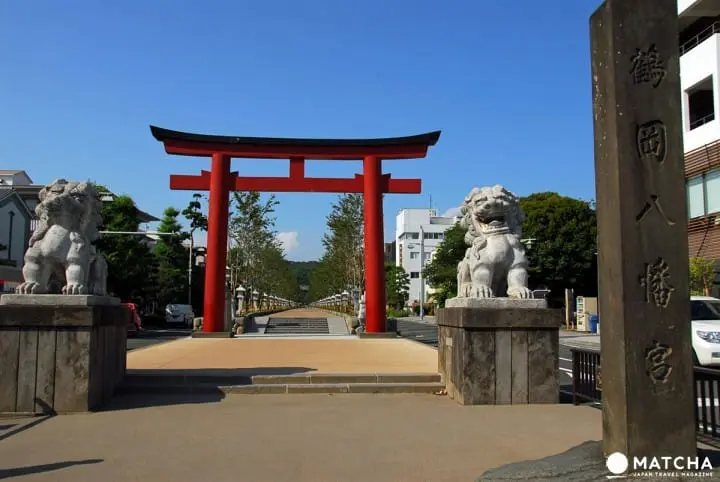
Pay your respects at Tsuruoka Hachimangu Shrine, then go shopping on Komachi Street on your way back and grab some Japanese sweets and souvenirs. We suggest you stroll around with a delicious snack in one hand as you check out the variety of stores.
11:30 - Venture Into The Mysterious Forest At Hokokuji Temple

Behind Hokokuji Temple, known as “the bamboo temple,” a forest comprising over 2000 bamboo trees lies in wait. A visit to this whimsical, mysterious scene is highly recommended for tourists. From Kamakura Station, the bus to Hokokuji is about a 12-minute ride, while it takes up to half an hour to reach the temple on foot.
13:00 - Have Lunch By Kamakura Station At Akimoto
Stop for lunch at Akimoto, right in front of Kamakura Station. The restaurant is well-known for expertly using young sardines and locally-grown vegetables in its cuisine.
14:00 - Take The Enoden To Hase, Head To Hasedera Temple On Foot and Go See The Great Buddha

Take the Enoshima Rail train (Enoden) from Kamakura Station. When riding the Enoden, you should use the Noriori-kun day pass (600 yen for adults/300 yen for children), which allows holders unlimited rides on the line for one day. Head three stops to Hase Station and stroll over to Hasedera Temple, five minutes away. You can enjoy the Kamakura colors here all year; in June, you can see hydrangeas, and check out the foliage from late October. From Hasedera Temple, head to Kotokuin to see the Great Buddha.
16:00 - Take Pictures At Kamakurakokomae Station, The Background For Many Anime Scenes
After you see Kamakura’s most exemplary temples, hop on the Enoden from Hase, go four stops on a train bound for Fujisawa and get off at Kamakurakokomae. Once the sunlight starts to wane, head two stops back towards Kamakura Station and head for Inamuragasaki Station. The beach five minutes away from the station has a great reputation as a place to watch the sun set. If you’re lucky and the weather is good, you can even see Mt. Fuji at the same time.
↑ Return to the top of article.
Kamakura Area Guide
The districts throughout Kamakura have their own highlights, from the spots around the station and the giant Buddha in the famous Hase area, to the relaxed atmosphere of the cafes in Kita-Kamakura. We’ll introduce you to some of the best sights in Kamakura.

Komachi Street, Tsurugaoka Hachimangu
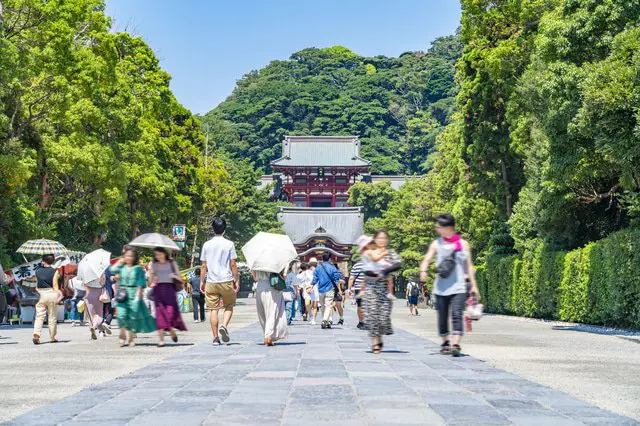
Right outside of Kamakura Station, Komachi Street is Kamakura’s most major shopping spot, lined with stores selling Japanese sundries, restaurants serving up local Kamakura cuisine, sweets shops, and more. At the end of the street is Tsuruoka Hachimangu Shrine, which has remained since Kamakura was the capital of Japan.
Komachi Street is a must-visit––we recommend enjoying the atmosphere while wearing a kimono or yukata, available for rent.
Hase Area: Hasedera Temple and the Giant Buddha
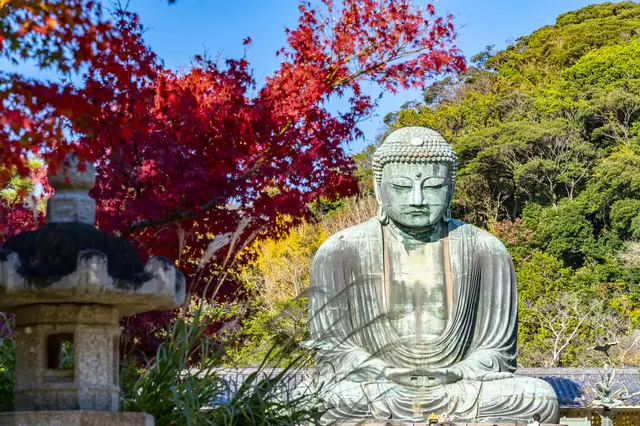
The area around the Enoden Hase Station is particularly famous in Kamakura, with its rows of shrines and temples. Foremost among these temples is Kotokuin Temple, with its Great Buddha Hall. Others include Hasedera Temple, with its reputation for hydrangeas, Kosokuji Temple, Jugenji Temple and Gorei-jinja Shrine.
Kamakurakokomae, Yuigahama

This picturesque spot at the Enoden Kamakurakokomae train stop frequently appears in anime, manga and movies. Snap a photo of this tranquil scene for yourself, with the sweep of Shichirigahama Beach’s sand and surf spreading out behind you.
Kita-Kamakura
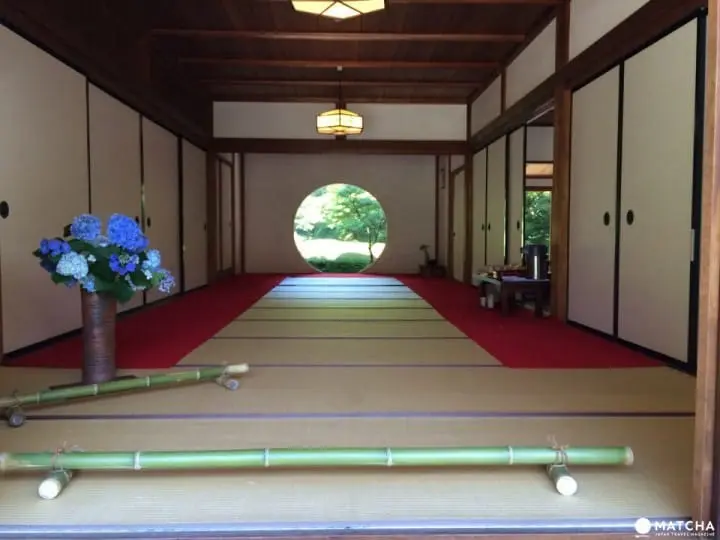
Kita-Kamakura has cool cafes, traditional art and temples like Meigetsuin Temple. Its understated, refined vibe feels different from the bustling Kamakura Station area.
Access: How to Get to Kamakura
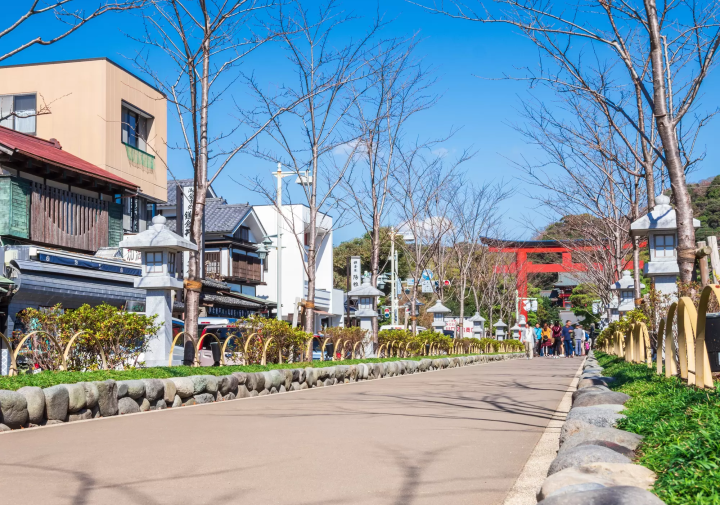
Photo by Pixta
Getting To Kamakura From Ikebukuro, Shinjuku, Or Shibuya
To get to Kamakura from Ikebukuro, Shinjuku or Shibuya Station, your most convenient route is via the JR Shonan Shinjuku Line on a train bound for Zushi. From Ikebukuro, the journey is one hour and three minutes; from Shinjuku, it takes 57 minutes; from Shibuya, it takes 52. The fare is 945 yen from all three stations.
Be careful when taking the Shonan Shinjuku Line. If you get on a train bound for Kozu or Odawara, you’ll need to switch midway at Ofuna Station and transfer to the JR Yokosuka Line. You don’t need to transfer on trains bound for Zushi, Yokosuka or Kurihama.
Getting To Kamakura From Tokyo And Shinagawa
You can head directly to Kamakura Station from Tokyo Station, Ueno Station or Shinagawa Station via the JR Yokosuka Line. The fare from Tokyo Station is 945 yen (59 minutes), and from Shinagawa Station, it’s 736 yen (51 minutes).
From Narita Airport to Kamakura
Next, we’ll talk about how to get from major airports to Kamakura Station.
From Narita Airport, take the Narita Express to Ofuna Station. From Ofuna Station, transfer to the JR Shonan-Shinjuku Line and get off at Kamakura Station. The whole trip takes about two hours and costs 5,000 yen.
From Haneda Airport to Kamakura
From Haneda Airport, head first to Yokohama Station. The limousine bus is convenient. From Yokohama, take either the Yokosuka Line or Shonan-Shinjuku Line to get to Kamakura Station. The whole trip takes about one hour and 12 minutes and costs 720 yen.
↑ Return to the top of article.
Getting Around Kamakura

JR Lines
Trains on the Yokosuka Line, Sobu Line and Shonan-Shinjuku Line operate out of JR Kamakura Station. Trains on the Yokosuka Line stop at the neighboring Kita-Kamakura Station. Utilize the JR Pass to travel efficiently and save on money.
Bus
Yokohama Keikyu and Enoshima buses operate in the city, allowing riders to visit tourist spots around Kamakura and go as far as Yokohama.
Enoshima Rail (Enoden)

The Enoden travels between Fujisawa Station and Kamakura Station. Some of its stops are Hase, which is close to the famous Buddha and Hasedera Temple, the well-known photo spot Kamakurakokomae, and the busy Enoshima Island. It’s an indispensable train line for visitors to the Kamakura area.
Taxi and Rental Car
While Kamakura does have taxis and rental car services, there are many narrow streets. These paths become crowded on weekends and during the peak tourist seasons in spring and fall: it’s best to either take public transportation, rent a bicycle, or walk.
Bicycles For Rent
We recommend visiting the area’s temples by bicycle; since they are somewhat spread out geographically, the Enoden can get pretty crowded. If your body is up to the challenge, rent a bicycle to travel around Kamakura.
Rickshaws (Jinrikisha)
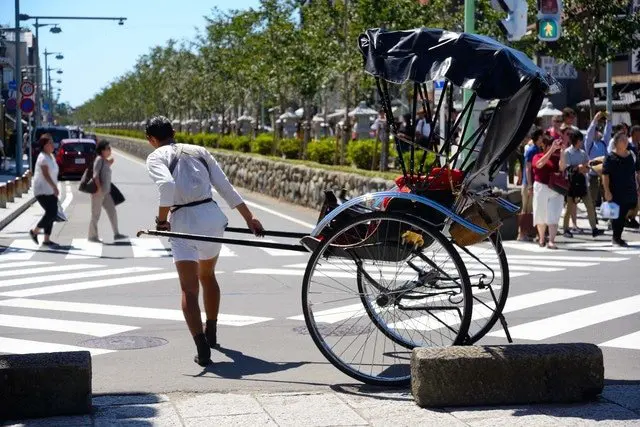
Two people can hitch a ride on a rickshaw in front of JR Kamakura Station. The man pulling the rickshaw will go around the surrounding areas and introduce the local tourist spots.
↑ Return to the top of article.
The Weather in Kamakura and What to Wear
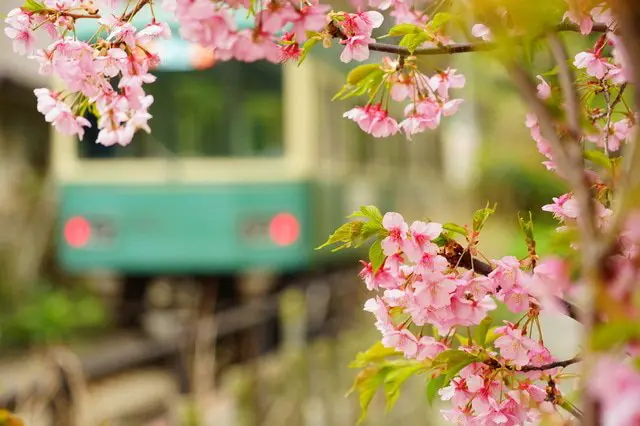
Kamakura has a relatively gentle climate. The best time to see the hydrangeas is in June, and November and December are the peak for fall foliage. Check them out at the city’s famous spots if you visit in early summer or fall/winter.
Kamakura has many highlights, with plenty of interesting places within walking distance from the station. You’ll want to wear sneakers or other shoes that emphasize function over fashion. Near the coast, you may encounter stronger winds or chillier temperatures than towards the station, so it is a good idea to bring an extra cardigan or light jacket with you in the spring and summer and to dress in layers in the fall and winter.
Kamakura Events and Seasonal Sights
January: The Launching of Ships
This festival is held by fishermen at Sakanoshita Beach and Zaimokuza Beach on January 2nd. They gather to give thanks for their safe voyages over the past year, and to pray for bountiful catches and safe travels in the year to come. It’s customary for fishermen to climb atop their ship masts with raised banners, and throw Mandarin oranges and sweets into the sea.
April: Kamakura Festival
At this elegant event, meant as a remembrance of the Kamakura shogunate’s founder, Minamoto no Yoritomo, people dressed in period-appropriate garb march in parades. You can see mounted archers on horseback riding alongside, and a woman dressed as Minamoto-no-Yoshitsune’s lover, Shizuka Gozen, performing her traditional dance.
June: Hydrangeas
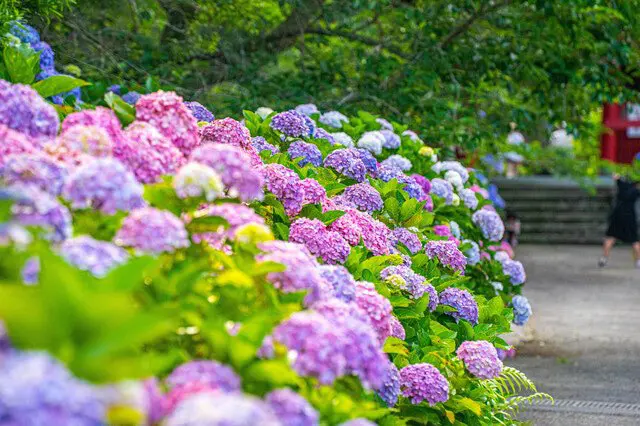
Rainy season is the best time to see the hydrangeas planted all over Kamakura. Their vibrant blooms lend plenty of color to the area’s venerable temples, creating a tasteful and beautiful scene.
September: Great Festival Of Hachimangu
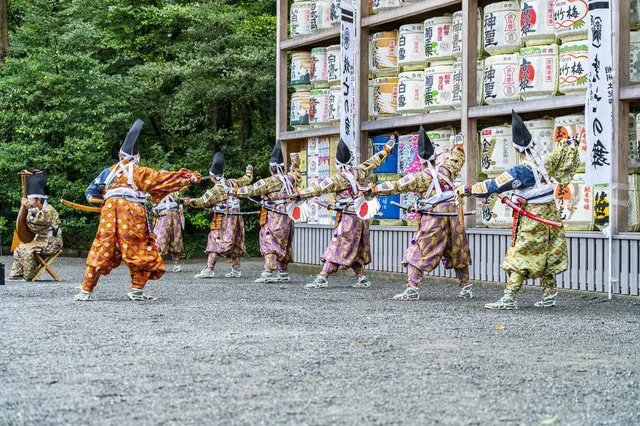
At this September event held at Tsuruoka Hachimangu, witness Kamakura bowmen - clad in Kamakura karishozoku outfits - firing arrows while on horseback.
November and December: Fall Foliage

Photo by Pixta
In fall and winter, the leaves of Kamakura’s trees turn a fiery red and draw photographers and nature lovers from across Japan and around the world with their beauty.
Kamakura Dining and Souvenirs
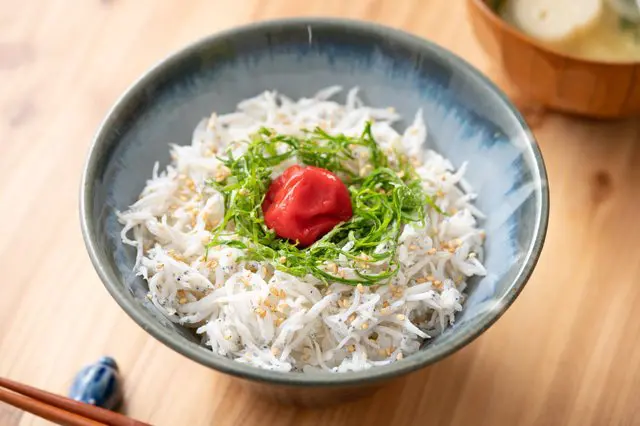
Dishes featuring freshly-caught shirasu, or young sardines, are Kamakura dining table staples. Some of the many variations include shirasu rice bowls, shirasu-topped pizza and shirasu pasta. In addition, Kamakura-grown vegetables are prized by gourmet chefs, so visit some restaurants which serve locally-sourced vegetable dishes if they pique your interest.
As we mentioned earlier, you can find incredible all-vegetarian meals served at the Kamakurabori Assembly Hall, while Hostel YUIGAHAMA has its own soba bar. But if you're looking for something lighter, then head to the Tobira Branch of Toshimaya, just outside of Kamakura Station, where you can enjoy freshly baked sweet and savory buns and rolls, plus hot and cold drinks in their cafe space.
Kamakura is also well-known for ham. Businesses began making ham in the areas around Kamakura over a century ago, during the Meiji era, and ham came to be one of Kamakura’s most well-known products. Since the ham is sold in vacuum-sealed packages, you may be able to buy some as a souvenir. However, many countries do not allow meat to be brought in through customs, so you’re probably better off savoring a slice at an affiliated restaurant.
Kamakura’s most famous souvenir item is Hato Sable, shortbread cookies shaped like doves made by the Toshimaya bakery. These cookies are perfect for afternoon tea.
Other souvenir possibilities include Kamakura carvings, lacquerware, and other traditional crafts. Japanese blades from Masamune Kogei are also an option, as well as konnyaku jelly soaps for ladies.
FAQ
Is a day trip to Kamakura worth it?
A day trip to Kamakura from Tokyo is highly recommended for its historical landmarks, cultural significance, and scenic beauty. In just an hour by train, you can explore attractions like the iconic Great Buddha at Kotokuin Temple, the serene Hasedera Temple with its lush gardens, the historic Tsurugaoka Hachimangu Shrine, and the tranquil Engakuji and Kenchoji Temples. Kamakura's coastal charm extends to its relaxing beach and picturesque streets lined with shops and cafes. The town's rich history and spiritual sites offer a serene escape from the urban hustle of Tokyo, making a day trip to Kamakura a rewarding and culturally enriching experience.
What is Kamakura famous for?
Kamakura served as the de facto capital of Japan from 1185 until 1333 during the Kamakura shogunate era and is renowned for its cultural and historical significance. Famous places to visit in Kamakura are the iconic Great Buddha at Kotokuin Temple and the serene Hasedera Temple with its Kannon statue. The city is also famous for Tsurugaoka Hachimangu Shrine and the Zen temples Engakuji and Kenchoji, offering spiritual retreats in peaceful settings. Kamakura's coastal charm adds to its appeal, providing picturesque ocean views and a relaxing beach experience. With a rich cultural heritage and well-preserved traditional architecture, Kamakura stands out as a must-visit destination for those seeking a blend of history, spirituality, and natural beauty.
Can I use Suica card in Kamakura?
Yes, you can use a Suica card in Kamakura for transportation on trains and buses. Suica is an IC card that is widely accepted for fare payment on various modes of public transportation in Japan, including trains, buses, subways, and even some taxis. Kamakura is well-connected by train, with the JR Yokosuka Line providing access to the city.
How much time do I need in Kamakura?
In planning your visit to Kamakura, the time needed largely depends on your itinerary and interests. For a basic overview of the main attractions like the Great Buddha and key temples, a half-day visit (around 4-5 hours) can suffice. To explore more extensively, including multiple temples, historic streets, and a leisurely lunch, consider dedicating a full day (8-10 hours) to immerse yourself in Kamakura's offerings. For a relaxed pace or to delve deeply into specific interests, extending your stay to a day and a half can provide a more comprehensive experience. Ultimately, tailoring your time in Kamakura to match your preferences ensures a rewarding exploration of this culturally rich and serene destination.
Can you see Mt Fuji from Kamakura?
Mount Fuji can potentially be seen from Kamakura on clear days given its proximity and favorable conditions. Locations like the observation deck at Enoshima Island, Hasedera Temple, and certain beach areas offer opportunities for glimpses of the iconic peak. However, visibility is subject to weather and atmospheric factors. While it's not guaranteed, keeping an eye out for Mount Fuji from Kamakura can add an extra dimension to your visit, especially if you are fortunate enough to witness this majestic sight on the horizon. If viewing Mount Fuji is a top priority, destinations like Hakone or the Fuji Five Lakes area may provide more reliable opportunities for close-up views.
Is Kamakura a day trip from Tokyo?
Yes, Kamakura is a popular day trip destination from Tokyo, located about 50 kilometers south. It takes around 1 to 1.5 hours by train to reach. Kamakura offers temples, shrines, historical sites, and beaches. Highlights include the Great Buddha and Tsurugaoka Hachimangu Shrine. It's a great destination to explore Japanese culture and history on a day trip from Tokyo.
Enjoy a Professional Photo Shoot Wearing a Kimono!
Capture My Japan is an on-location photography service tailored for international travelers visiting Japan. With bases located nationwide, we offer English-speaking photography services in various regions such as Tokyo, Kyoto, and Osaka.
Also, a new plan has been released by Capture My Japan and VASARA, Japan's largest kimono rental store, offering customers the opportunity to rent kimonos or yukatas for photo shoots. The package includes both the photography session and kimono rental along with professional hairstyling services. This option is particularly recommended for those who wish to capture memories in kimonos against traditional Japanese scenery.
Why not immortalize your precious memories in Japan with Capture My Japan? When applying, use the coupon code MATCHA-2986 to enjoy a 5% discount on your photo shoot!
Read also
Enjoy Your Trip to Kamakura!
One of Japan's old capitals, Kamakura is a fascinating place to visit all year round. With so many historically significant buildings, beautiful natural landscapes, and incredible foods to enjoy, you're sure to find yourself spending a fulfilling day in the area. Make sure to wear comfortable walking shoes, or if you have the chance, travel by rickshaw, and see all that this stunning former capital has to offer!
Read also
All photos, including the main image, courtesy of Pixta





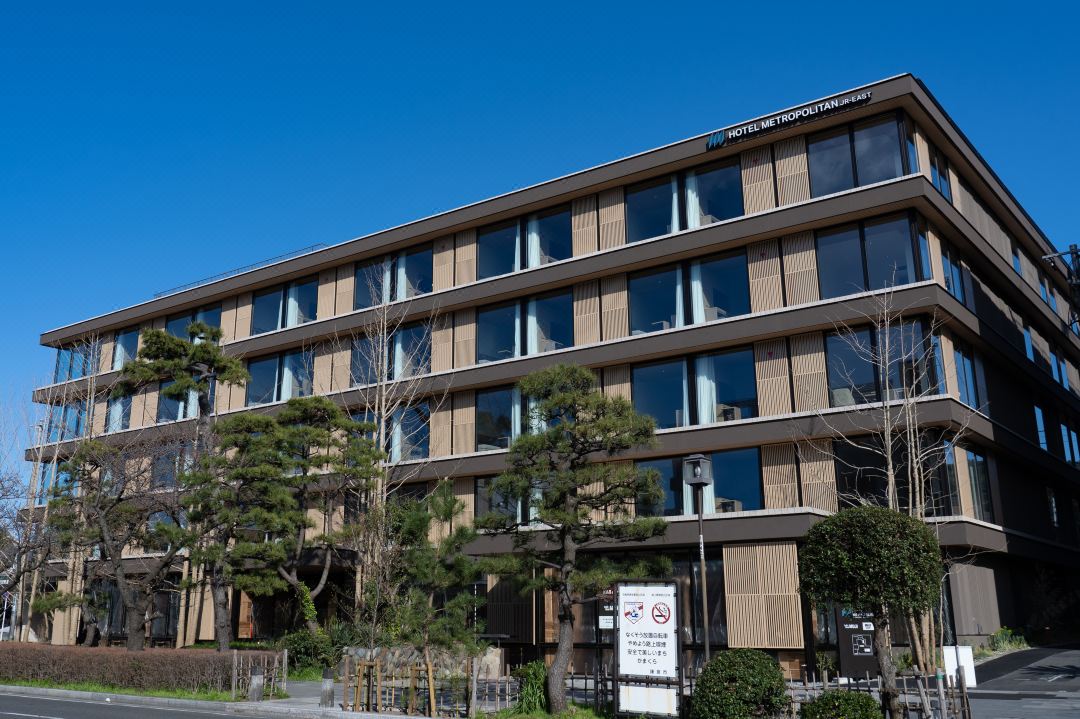
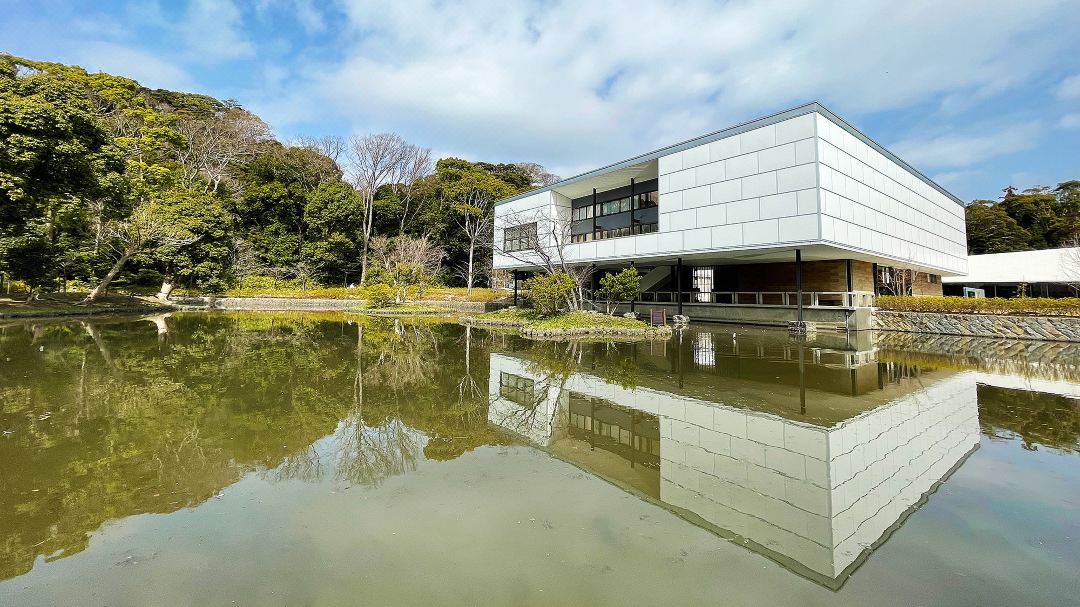



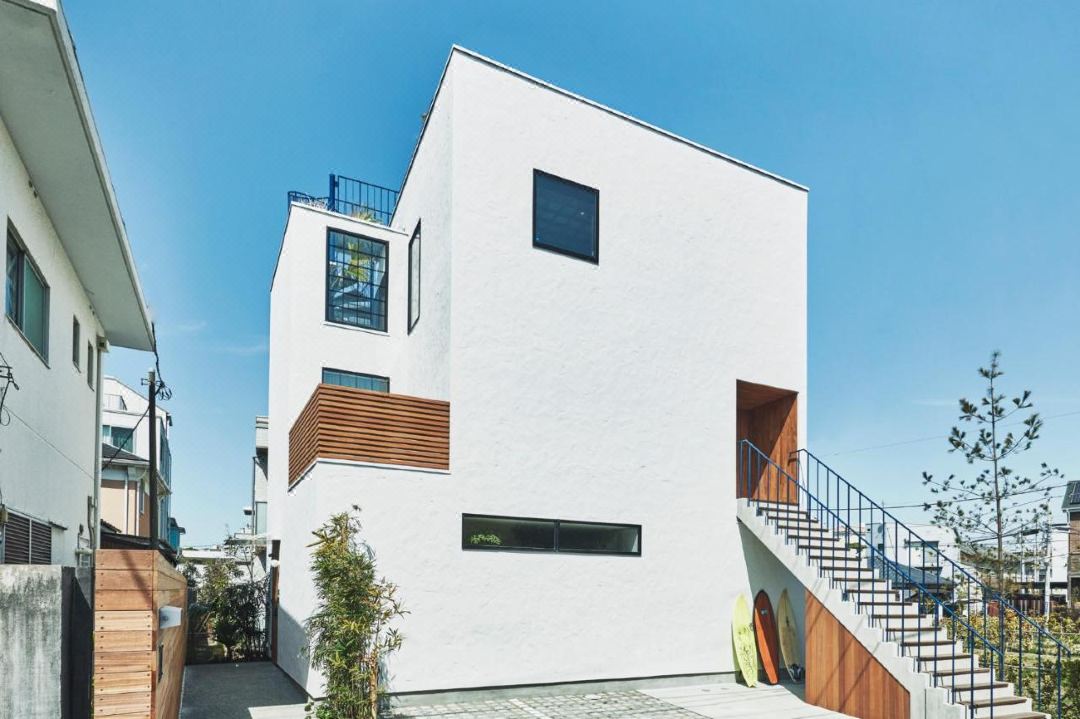
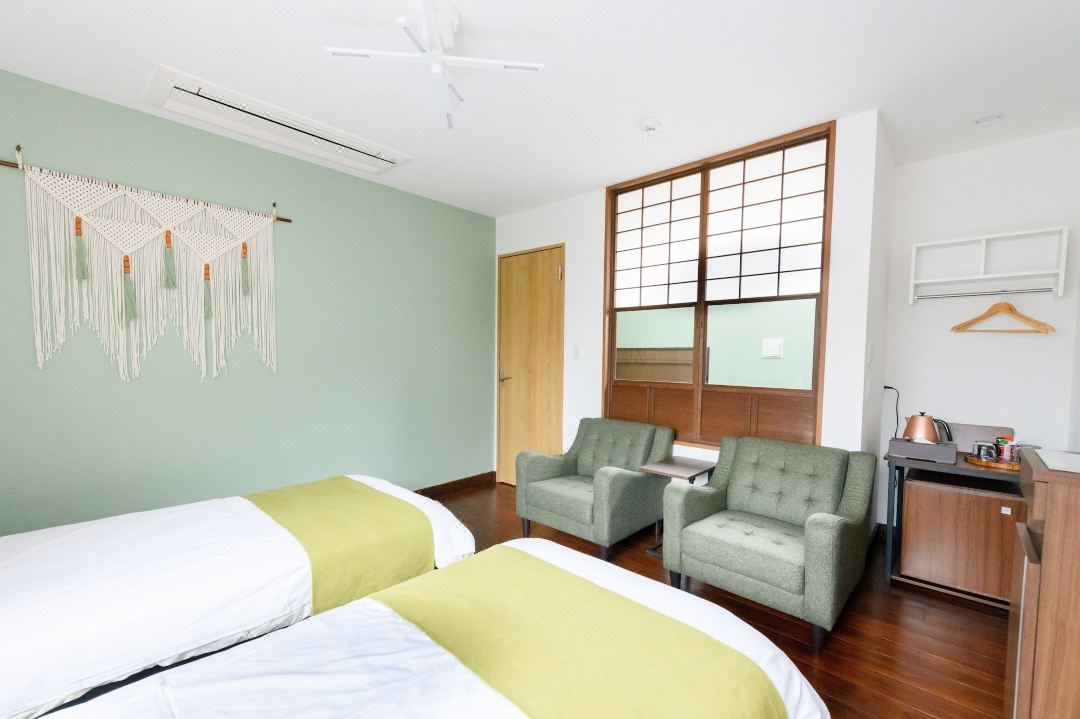
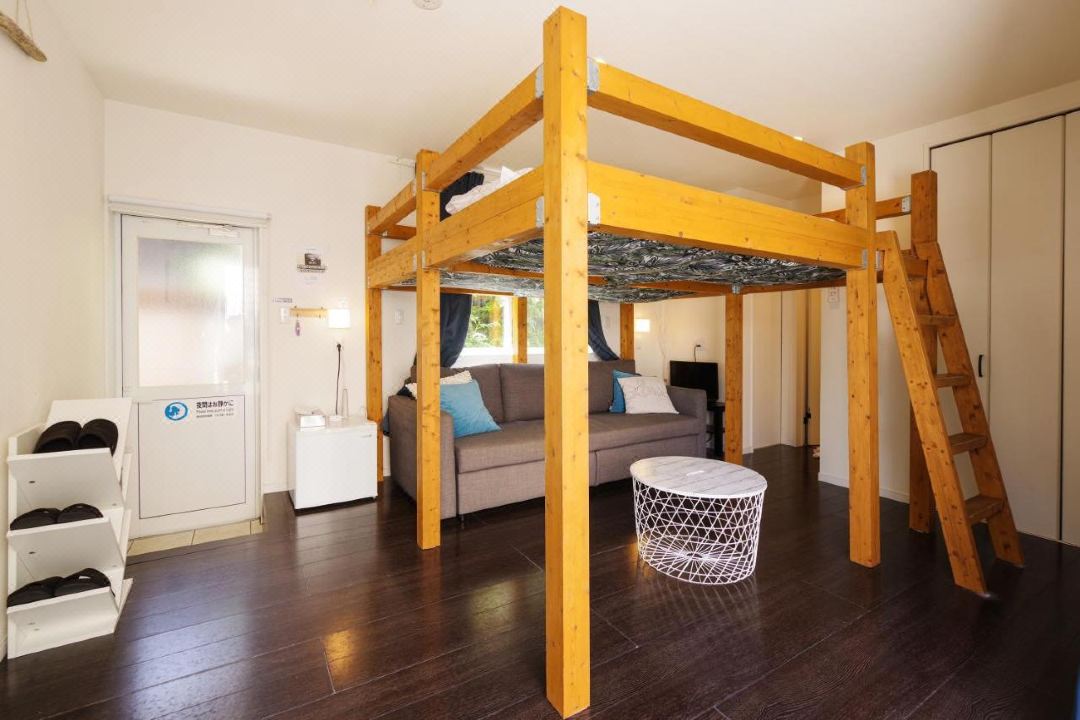

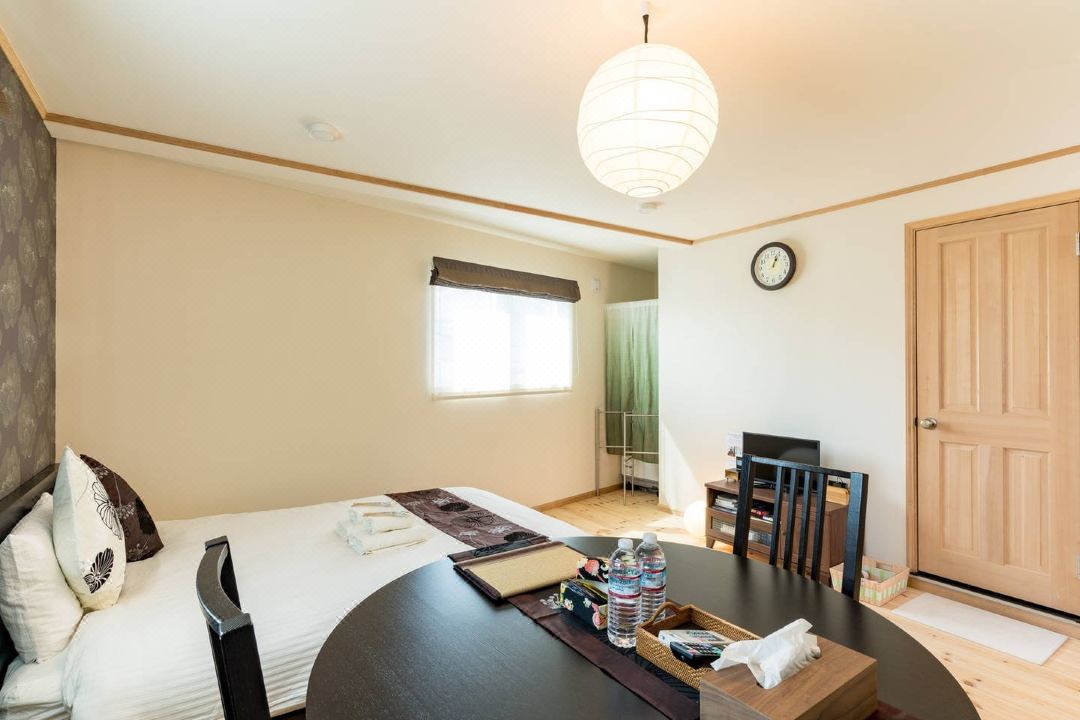





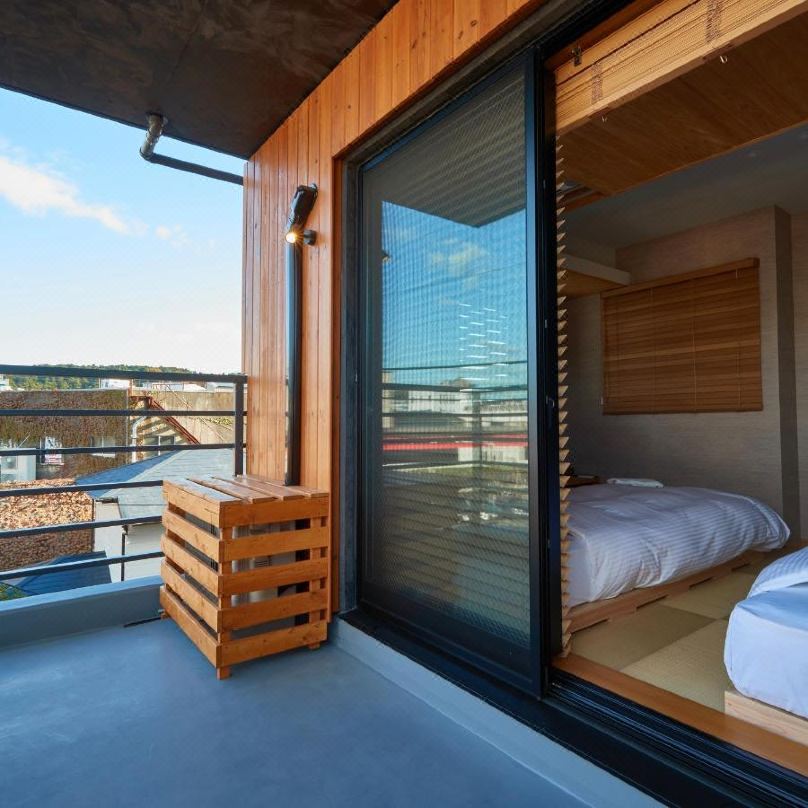















































![[2026 Edition] FORMUAL 1 JAPANESE GRAND PRIX Information](https://resources.matcha-jp.com/resize/720x2000/2025/10/05-245984.webp)


![[2025 Update] Namba's spectacular illuminations! "Namba Hikari Tabi" with approximately 1 million shining lights](https://resources.matcha-jp.com/resize/720x2000/2025/12/12-252825.webp)